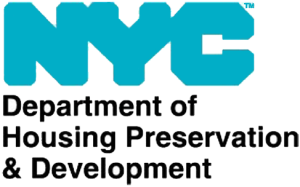
The “421-a Extended Affordability Program Rules” would provide a 10 to 15 year extension to eligible buildings enrolled in the program prior to its expiration. On March 14, 2016, the Department of Housing Preservation and Development proposed two agency rules to extend the 421-a real property tax exemption program for those who already had been benefiting from the program prior to its expiration in June 2015. The State authorized HPD to promulgate the new rules via State Law from June 26, 2015.
421-a Background
New York State Real Property Tax Law 421-a, or RPTL 421-a, authorizes tax exemptions and other benefits to be granted to developers who build residential rental buildings on sites that were vacant or predominantly vacant. In 1971, the State legislature enacted RPTL 421, to grant a 10-year real property tax exemption to new residential buildings constructed on vacant or underutilized property Citywide. As originally conceived, RPTL 421 did not discriminate between market-rate and affordable units. It aimed to spark residential development of any kind in an attempt to counter the declining property values and Citywide population. In the 1980s, the housing market began to rise in Manhattan. In 1985, the tax exemption program, known today as 421-a, was amended to provide for a “Geographic Exclusion Area,” or GEA. The amended 421-a required that construction conducted within the Manhattan core—from 14th Street to 96th Street—be accompanied by an affordable housing component in order to qualify for the tax exemption benefits.
Until RPTL 421-a expired on June 15, 2015, developers were eligible for a tax exemption for 10 to 25 years, depending on the location and affordability of the residential building. The longer extension periods were available to projects that located in northern Manhattan and the other four boroughs, receiving additional governmental assistance, or making available 20 percent of their residential units as affordable housing. Additionally, RPTL 421-a mandates the rent stabilization of all residential units for the duration of the tax exemption period per each respective site, with the exception of affordable rental units which must be rent stabilized for a total of 35 years.
421- Expiration and Extension
On June 15, 2015, the State Legislature failed to re-authorize the City’s ability to provide 421-a tax exemptions. However, a few days later, on June 26, 2015, the State legislature enacted Chapter 20 of the Laws of 2015, which gave the City authorization to partially preserved and revise 421-a in three major ways:
Construction Commencing Prior to July 1, 2008
Chapter 20 gives HPD the authority to extend the benefits period for buildings which had been awarded 20 or 25 years of tax exemption benefits prior to June 15, 2015, so long as such buildings had initially begun construction work prior to July 1, 2008.
The HPD proposed “421-a Extended Affordability Program Rules” would grant an additional 10 to 15 years of tax exemption benefits to residential rental buildings already enrolled in the 421-a program, so long as the buildings provide evidence of compliance with the 20-percent affordability provision and set aside an additional five percent of their rental units for individuals and families with annual earnings at or below 130 percent of the area median income. Eligible buildings that had previously been granted a 20-year benefit period would be awarded a 15-year extension, and buildings previously granted a 25-year benefit period would be awarded a 10-year extension.
Construction Commencing from July 2, 2008 to December 31, 2015
Chapter 20 gives HPD the authority to extend the use of the expiring 421-a program for eligible construction projects that began construction at some point between June 15, 2015 and December 31, 2015, subject to all construction work being completed by December 31, 2019.
Chapter 20 slightly modified the program existing program, though. Multiple dwelling buildings that would otherwise be eligible to benefit from the existing program’s extension may do so subject to conditions. The buildings are prohibited from isolating affordable housing units on one specific floor or area of the building. Additionally, the buildings must make all of their entrances and common areas accessible and shared by all of the buildings’ residents.
HPD’s proposed amendment to its “421-a Rules” to implement the State-authorized extension of the existing program. The specific conditions proposed by HPD require that 30 percent of the residential units on floors containing affordable housing units be market-rate. Additionally, HPD proposed to implement Chapter 20’s required specifications pertaining to shared common entrances and common areas.
Construction Commencing after December 31, 2015
The State established a new 421-a tax exemption program to benefit new eligible projects that begin construction work between January 1, 2016 and June 15, 2019, on the condition that construction work is completed by June 15, 2023. However, the third revision does not go into effect until residential real estate developers and construction workers’ labor unions are able to come to a legal agreement pertaining to the wages paid to construction workers on 421-a projects yielding more than 15 residential units.
By: Brian Kaszuba, CityLand Editor and Jessica Soultanian-Braunstein CityLaw Fellow.

